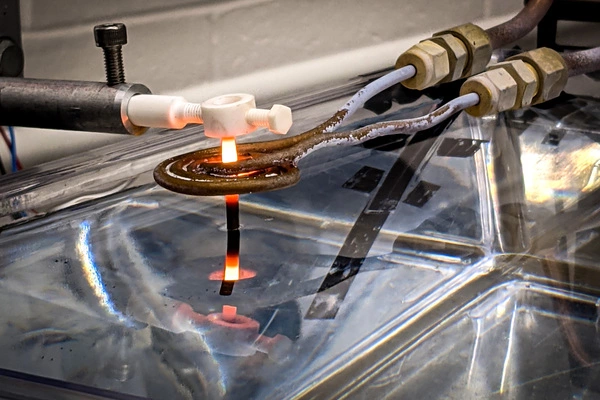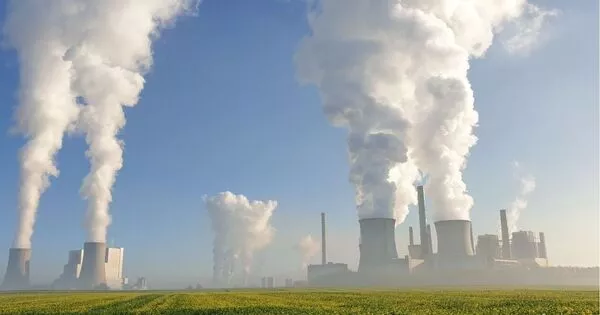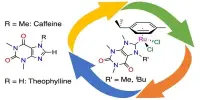A new superalloy has been developed that could help reduce carbon emissions from power plants. The superalloy is made of a combination of nickel, iron, and cobalt and has been shown to be highly resistant to corrosion and oxidation at high temperatures.
Researchers have demonstrated that a new 3D-printed superalloy could assist power plants in producing more electricity while emitting less carbon. As the world looks for ways to reduce greenhouse gas emissions, Sandia National Laboratories researchers have demonstrated that a new 3D-printed superalloy could help power plants generate more electricity while emitting less carbon.
Sandia scientists used a 3D printer to create a high-performance metal alloy, or superalloy, with an unusual composition that makes it stronger and lighter than state-of-the-art materials currently used in gas turbine machinery. They collaborated with researchers from Ames National Laboratory, Iowa State University, and Bruker Corp. The findings could have broad impacts across the energy sector as well as the aerospace and automotive industries, and hints at a new class of similar alloys waiting to be discovered.
“We’re showing that this material can access previously unobtainable combinations of high strength, low weight and high-temperature resiliency,” Sandia scientist Andrew Kustas said. “We think part of the reason we achieved this is because of the additive manufacturing approach.”
The team published their findings in the journal Applied Materials Today.
We’re showing that this material can access previously unobtainable combinations of high strength, low weight and high-temperature resiliency. We think part of the reason we achieved this is because of the additive manufacturing approach.
Andrew Kustas
Material withstands high heat, essential for power plant turbines
According to the US Energy Information Administration, approximately 80% of electricity in the United States is generated by fossil fuel or nuclear power plants. Heat is used in both types of facilities to turn turbines that generate electricity. The temperature of metal turbine parts limits power plant efficiency. If turbines can operate at higher temperatures, “more energy can be converted to electricity while reducing the amount of waste heat released into the environment,” according to Sal Rodriguez, a Sandia nuclear engineer who did not participate in the study.
Sandia’s tests revealed that the new superalloy, which contains 42% aluminum, 25% titanium, 13% niobium, 8% zirconium, 8% molybdenum, and 4% tantalum, was stronger at 800 degrees Celsius (1,472 degrees Fahrenheit) than many other high-performance alloys, including those used in turbine parts today, and even stronger when cooled to room temperature.
“This is thus a win-win situation for more cost-effective energy and for the environment,” Rodriguez explained.
The findings could benefit industries other than energy. Aerospace researchers are looking for lightweight materials that can withstand high temperatures. Furthermore, Ames Lab scientist Nic Argibay stated that Ames and Sandia are collaborating with industry to investigate how alloys like this could be used in the automotive industry.
“We are now in the process of optimizing this new class of alloys to address manufacturing and scalability challenges,” Argibay said. “Electronic structure theory led by Ames Lab was able to provide an understanding of the atomic origins of these useful properties,” Argibay said.
The Department of Energy and Sandia’s Laboratory Directed Research and Development program funded the research.

Discovery highlights changes in materials science
Additive manufacturing, also known as 3D printing, is a versatile and energy-efficient manufacturing method. A common printing technique involves flash-melting a material, usually plastic or metal, with a high-power laser. The printer then deposits that material in layers, building an object as the molten material rapidly cools and solidifies.
However, this new study shows how the technology can also be repurposed as a quick and efficient way to create new materials. Sandia team members used a 3D printer to quickly melt powdered metals and then print a sample of it. Because no single metal accounts for more than half of the material, Sandia’s invention represents a fundamental shift in alloy development. Steel, on the other hand, is 98% iron combined with carbon and other elements.
“Iron and a pinch of carbon altered the course of history,” Kustas said. “We have many examples of combining two or three elements to create a useful engineering alloy. We’re now approaching four or five or more within a single material. That’s when things start to get interesting and challenging in terms of materials science and metallurgy.”
Scalability, cost are challenges to overcome
Moving forward, the researchers want to see if advanced computer modeling techniques can help them find more members of what could be a new class of high-performance, additive manufacturing-forward superalloys.
“These are extremely complex mixtures,” said Michael Chandross, a Sandia scientist who specializes in atomic-scale computer modeling but was not involved in the study. “All of these metals interact at the microscopic, even atomic, level, and it is these interactions that determine how strong a metal is, how malleable it is, what its melting point is, and so on. Because it can calculate all of that and predict the performance of a new material before we fabricate it, our model removes a lot of the guesswork from metallurgy.”
Kustas stated that there will be difficulties ahead. For one thing, it may be difficult to produce large quantities of the new superalloy without microscopic cracks, which is a common challenge in additive manufacturing. He also stated that the materials used to make the alloy are costly. As a result, the alloy may not be appropriate in consumer goods where cost is a primary concern.
















